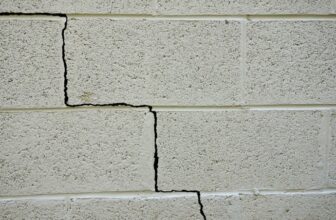
Rainwater Harvesting System: 4 Ways to Collect Rainwater at Home For Later Use
Green technologies and methods for homes are steadily catching on in different parts of the world, and for good reason. It cannot be denied that climate change is indeed underway, and populations and scrambling to get their acts together before it’s too late and the adverse consequences strike.
One green technology and method that’s becoming more popular in many places around the world outside those where this is already popular, if not mandated by government, is rainwater harvesting. While not a newly-invented practice—it was how many ancient peoples obtained water for their use and consumption, after all—rainwater harvesting is well on its way to becoming the norm. This is because of a fact that’s slowly spreading in different parts of the world: that energy coming from not-so-friendly sources is used to distribute a huge percentage of water to billions of individuals.
Another reason why rainwater harvesting is becoming popular again is because of significant improvements to components used to make water purer; and this meant rainwater can once again be considered a good source of water for use in a number of tasks and chores at home.
But while it’s true that there now are many improvements to the components used to rid water of a certain amount of impurities, it does not mean that rainwater can be just collected any other way than the method mentioned below.
Building a rainwater harvesting system that works means installing the following components:
1. Catchment and Drainage Systems
The first system in a rainwater harvesting system is the catchment system, also called the roof of the house. While most roofing materials used nowadays are suitable for use in catching rainwater; the best one to setup is an unpainted metal roof.
It’s worth remembering that metal roofs do not have components that can leach into collected rainwater and contaminate it. But when painted that’s an entirely different story — paint is generally composed of toxic materials; that can leach into the rainwater that goes down the downpipe and into the tank.
Many filters and meshes are unable to prevent paint components from mixing with rainwater; that goes down the downpipe and flows down into the tank.
The drainage system is where the rainwater that has fallen down the catchment flows afterward. This system is usually composed of a gutter that leads to the downpipe; and the downpipe that leads into the tank opening itself. A food grade gutter and downpipe are best for this particular system; as it ensures the suitability of collected water for chores that require pure water.
2. Meshes, Filters, and Purification Systems
The finer the meshes and filters, the more effective they are in preventing the entry of contaminants and pollutants; such as dust particles, fallen leaves, and broken twigs. The fineness of a filter or mesh most specifically refers to the size of its pores; with its unit of measurement being the micron. The finest filters in the market have pores that measure 0.001 microns.
Purification systems are quite different from filters, but are required in the creation of an effective rainwater harvesting system. These are different in the sense that they do not necessarily have filters; some involve the use of chemicals, in fact.
3. Rainwater Storage Tank
There are many rainwater storage tanks available in the market; and each model is designed with a certain need in mind. A slimline tank, for example, is designed for homeowners looking to save space as they reap the benefits of saving water. Same is true with an under deck storage tank.
A large concrete underground tank; however, is intended for those who have large properties; but are not willing to spare a few square metres for a water tank.
4. Pump
A water pump, specifically a rainwater harvesting pump; allows all the rainwater that’s stored in the tank to be evenly distributed across parts of the house where they are most needed.
A rainwater harvesting system that’s built following the steps highlighted above, coupled with a water-saving plan for bathroom renovation with rainwater tank and other water-saving solutions, are beneficial in multiple ways. It lessens the water that ends up wasted, lessens the money you spend for water; and helps lessen the demand for environmentally unfriendly sources of energy.




